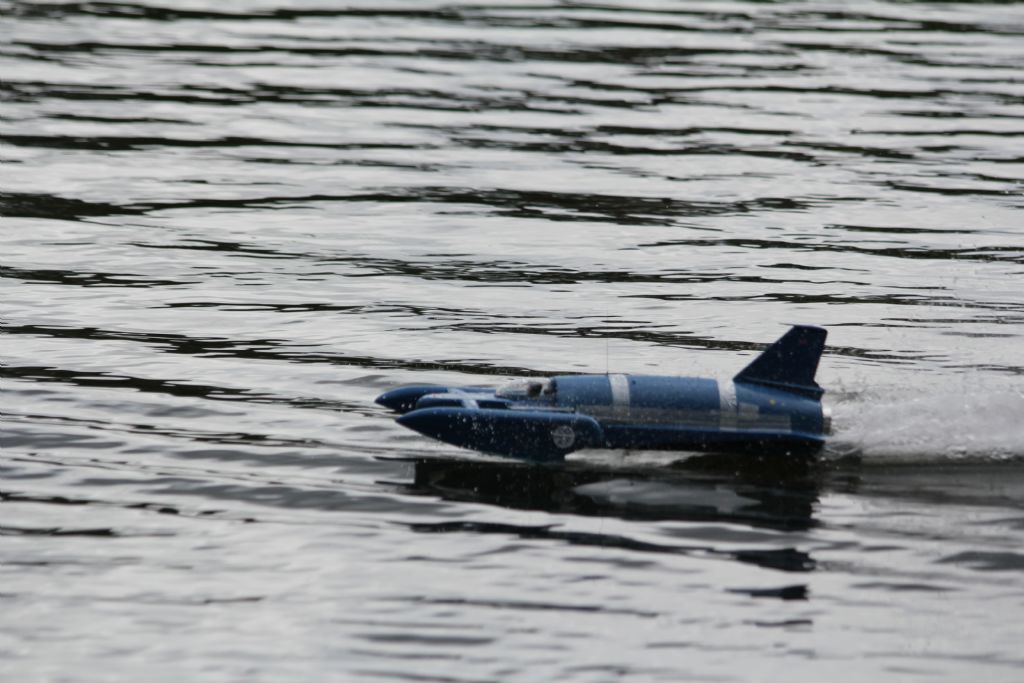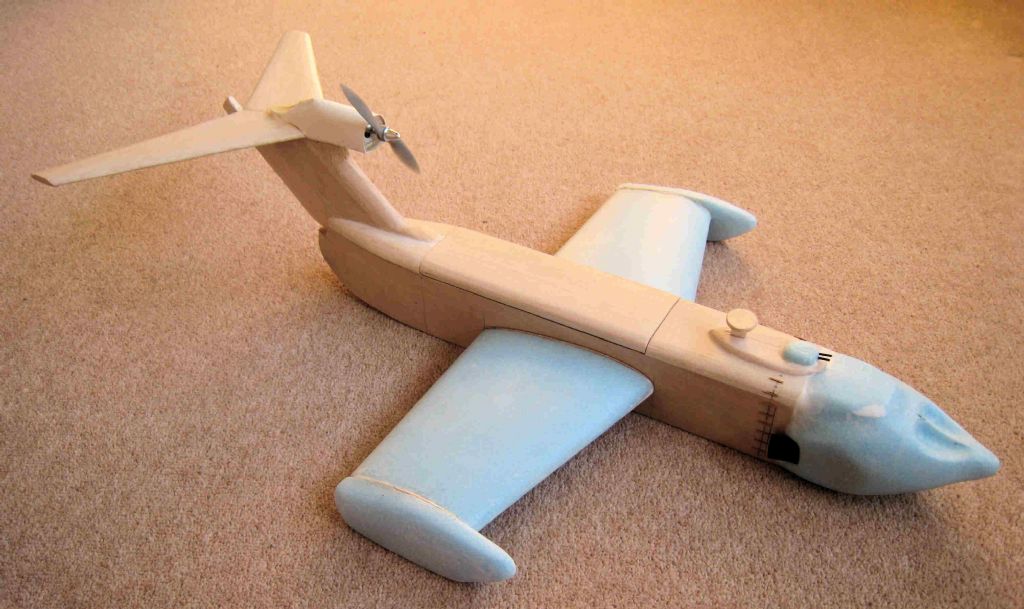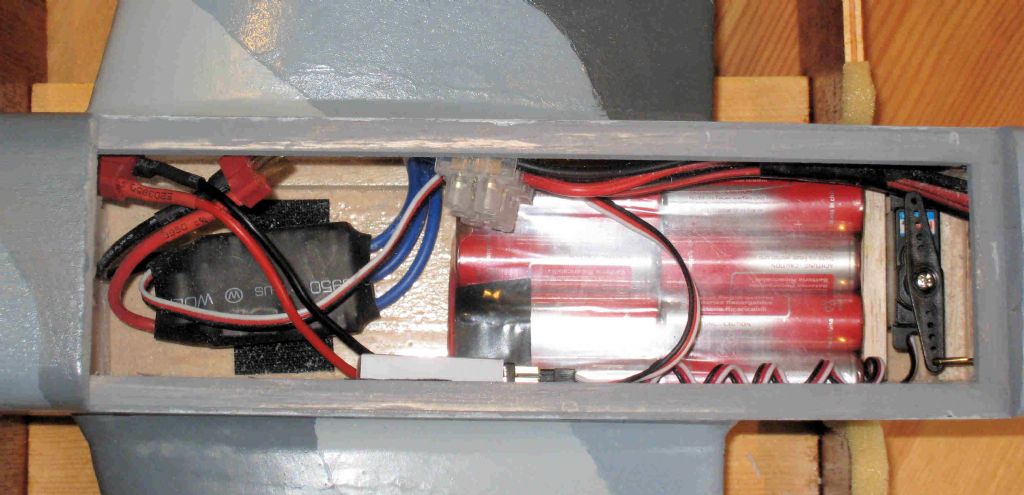Jeremy. Nice, better than mine, should be nice and smooth.
I used p38 car filler to provide a smooth fillet to blend the wing into the body. You may want to consider something else as your wings are going to be very soft (or you could eze/fibreglass them first)…I might suggest for the shoulders (fillet), you butt the inner edge up to a block of foam, draw around it to get a profile and cut a thin wedged shape out to glue over the wing/body joint and sand this to shape.
Optimum location !! I looked at it, weighed up the pro`s and cons of getting it wrong and stuck `em on !! The leading edge is 30mm avove the bottom of the hull, and the trailing 22mm.
Before sticking anything on, balance the boat in the bath, with all the gear inside or on top (or a guestimate in materials for the weight of bits not yet made), and mark the waterline. Dont forget the boat sits, or will need to sit, well back, and not level, as the rear will lifts by a good15-20mm when power is applied, as a guide.
Then when you hold one wing in position you can see how close to the water you might risk it! I think I probably overdid the incidence, looking at all my pictures, as the leading edge is some way clear of the water in virtually all the shots and a rise of 25mm may be ok at the front.In actual fact a small rise at the rear may be benificial, to flatten the angle off a bit and have the training edge clear of the water. I would leave lots of material on the end plates/floats and have a go with them large..you can sand down easily enough at the pond side, and if you take just a bit too much off, its easy to simply glue a bit back on. I made mine deep to start with after experiences with the Sunderland etc, but probly wide is the way to go, no one will notice extra wide floats. Mine are 20mm wide at the bottom and about 35mm deep in the centre, tapering to a point at the front and flattening off to about 30mm at the rear.
I sanded the bottoms of these very slightly outwards rather than flat to tend to clear water outwards and not inwards if you see what I mean. At speed they are sort of foils rather than just floats.
I couldnt think of a way to trail the wing position without building virtually two boats( I thought of using hot glue as a temporary measure, but if one wing fell off…), so I went for safety. This was also one of those things…the real craft had the wings at the bottom of the hull, I felt that this was a non-starter for a model and so moved them up as little as I thought I could get away with, with regard to aesthetics and operational neccessity.
Its very tricky trying to double guess what will happen to an experimental craft once water and boat meet. The Sunderland was a case in point, the humungous nose down attitude it developed when power was applied made my heart sink, after all that work. BUT with a bit of perseverence !
Ashley







 .
. 

